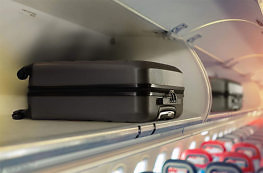No matter whether you are an occasional traveller, a summer holidaymaker or a world traveller – no one can do without a good suitcase. The variety has become so great that the choice is not easy. From the practical 4 wheel case, which can also be carried in cabin luggage, to the large family suitcase, in which the utensils of an entire family can be stored.
1. The Different Types of Suitcases
There are many different types of suitcases, which are usually divided into three different categories: Suitcases with hard shell, models with semi-hard shell, i.e. a combination of hard and soft, and soft shell suitcases.
1.1 Hard Shell
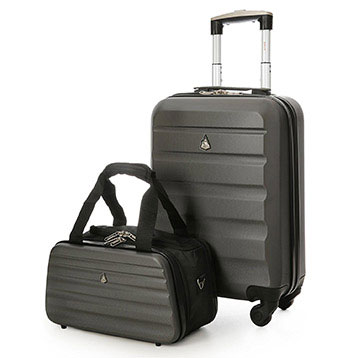
Polycarbonate, ABS or metal is the most commonly used material for the hard shell suitcase. Despite its stability, its own weight is usually quite low. A disadvantage is that the volume or size is fixed. Here no squeezing and pressing helps to tickle out a few more centimetres. Such suitcases are usually equipped with a sturdy housing as well as wheels and tension straps, which makes transport considerably easier.
1.2 Hybrid Shell
The semi-hard shell suitcases are also known as hybrids. They combine the good properties of a hard shell case with those of a soft-shell model. The material used is usually polycarbonate or polypropylene, which makes the shell less rigid. The corners and edges are usually reinforced for greater stability and these cases are also equipped with wheels and a telescopic handle as standard.
1.3 Soft Shell
Suitcases with a soft shell are very robust and flexible. They are mainly made of resistant leather or polyester and are reinforced at the bottom and sides. This makes these models extremely lightweight and above all very elastic. When not in use, they can simply be folded and stowed away. In addition, most soft shell suitcases are much cheaper to buy.
2. Which Luggage Size Is the Right One?
Most travellers and holidaymakers ask themselves before almost every trip what size of luggage they need. A suitcase with a volume of about 20 to 40 litres is sufficient for a journey lasting two days. For a journey of up to seven days, you should choose a luggage volume of 50 to 70 litres. For journeys lasting two to three weeks, it is recommended to use a suitcase with a volume of 90 to 120 litres. Especially when there is no washing machine available, more clothes are needed.
Tip: If you want to know exactly, just do some calculations. Fold your luggage neatly and measure it. Calculate now: Length x width x height (in cm) / 1000 and you will receive your required case size in litres.
3. Important Equipment Details
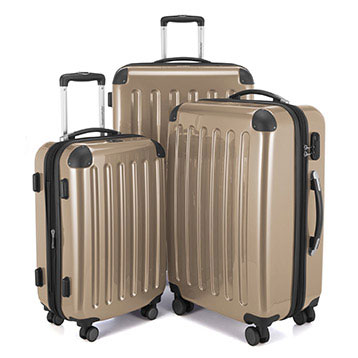
3.1 The Right Size
For larger holidays you should also use large pieces of luggage. For smaller weekend trips or short trips, a medium-size case is sufficient. For case manufacturers, there is no uniform information on what can be described as “large”, “medium” or “small”. As a basic guideline, a suitcase is considered to be large if it reaches a height of at least 70-75 cm. Medium baggage is usually 60-69 cm high and small about 50-59 cm.
3.2 Sturdy Material
Lightweight are cases made of fabric and equipped with a metal frame (stainless steel or aluminium). Unfortunately, they are also relatively short-lived, because hard-wearing fabrics are less durable than hard surfaces. Shell cases are extremely sturdy suitcases, but also have a relatively high weight. Aluminium suitcases are sturdy, durable but also relatively expensive, but these suitcases also last very long.
3.3 TSA Lock
When travelling to the USA, every suitcase can be opened at any time by the “Transportation Security Administration”. So-called “TSA locks” were developed to prevent forced opening. The American Security Service can open these locks with a special key. Otherwise, conventional locks will be broken open as required and not replaced.
3.4 High-Quality Wheels
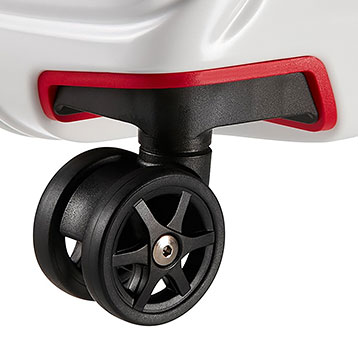
High-quality suitcases usually have four ball bearing twin wheels. These twin wheels can be rotated through 360°, resulting in excellent rolling characteristics in any chosen direction. However, when fully loaded, the case should never be pushed on all four rollers, otherwise the wheels may break off.
3.5 Low Weight
When buying a suitcase, you should of course also pay attention to the weight that the suitcase itself weighs. Logically, a sturdy and robust suitcase also weighs more. Nevertheless, higher-priced models are usually lighter than inexpensive models.
3.6 The Interior Equipment
In principle, the fewer storage possibilities, the cheaper the suitcase is. One should rather distance oneself from a suitcase with many compartments. In case of doubt, you should prefer a suitcase with a large interior, instead of being annoyed with many straps and attachments.
3.7 Striking Design
Last year more than 21,6 million pieces of luggage were reported missing worldwide. Be brave and pick strong colours or patterns so that you can recognize your suitcase among all the others. Another way to uniquely identify your baggage is to affix a sticker or a distinctive strap.
4. What Size and Weight Qualifies as Cabin Luggage?
Many airlines meticulously check the dimensions and exact weight of cabin luggage. For this reason, you should obtain precise information about the maximum permitted dimensions and maximum weight for cabin luggage before departure. We have created a separate cabin luggage guide, where we go to the right sizes and specially recommend luggage.
For most airlines, Wikipedia provides an overview of the permitted sizes. For British Airways the maximum cabin luggage size is 56 x 45 x 25 cm with a weight of 23 kg.
Cabin luggage that is too large or heavy is often rejected and may have to be checked in at a later date. Usually only one piece of cabin luggage is allowed per passenger in economy class. In Business Class it is often allowed to carry two pieces of luggage.
5. Well-Known Manufacturers
5.1 Samsonite
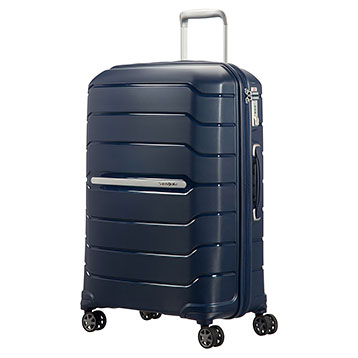
Samsonite is an internationally renowned luggage manufacturer with an excellent reputation in this country, despite the fact that Samsonite products are relatively expensive. The company, founded in 1910 in the USA by a Polish Jewish immigrant family, was named after the biblical story of the strong Samson. In the meantime, brands such as American Tourister, Gregory or Lipault have also become Samsonite brands. All of the company’s products are manufactured in Europe under fair working conditions.
5.2 Rimowa
Rimowa was founded in 1898 in a suitcase manufactory as a small family business in Cologne. At that time, the suitcases were still made of resistant wood with the main focus on lightweight construction. In the golden age of flying, Rimowa then developed the iconic aluminium groove design, which since then has been a clear distinguishing feature of the manufacturer. The Rimowa suitcases are comparatively expensive and yet popular.
5.3 Travelite
The Travelite brand is already selling its luggage in the third generation. The company was founded in 1949 by the Hamburg entrepreneurs Anna and Gerhard Winkler. In the second generation, production was first expanded to South America and later to Asia. The company’s products can be found in a broad product portfolio at a fair price-performance ratio.
5.4 Titan
The German company behind the Titan brand is represented in over 30 countries around the world. In addition to the X-Ray series produced in Germany, at least the entire collection is designed and developed in Germany. The Titan cases have even made it onto television. At the shows “Germany’s next Topmodel”, “Desperate Housewives” and “The Big Bang Theory” Titan’s suitcases have already been shown.
6. Lock Suitcases Only With TSA
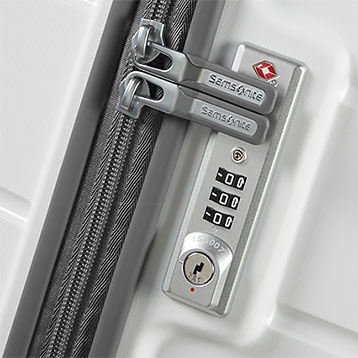
Are you planning to travel to the USA? Then you should read the following lines. Since 2002, all suitcases in the United States have been screened by the North American Aviation Safety Administration (TSA). If the officer notices something or if your suitcase is selected as a sample, it will be opened and searched. If the baggage is locked, the authority is entitled to break open the baggage.
However, this only happens if there is no TSA lock on your luggage. The TSA has a master key for these locks, which allows the case to be opened without having the numerical code or the “correct” key. This master key is not commercially available and is only used by a few selected TSA officials.
7. Frequently Asked Questions (FAQ)
Why Are Rimowa Suitcases so Expensive?
According to Rimowa, it has very high quality standards and, unlike many other case manufacturers, has its production entirely in Europe. In addition, the suitcase brand will only be available in an exclusive trading environment in the future.
For Which Brand Does Christiano Ronaldo Advertise?
Christiano Ronaldo shot an advertising spot for the American Tourister suitcase brand, which in turn is a subsidiary of Samsonite.
Is a Suitcase Repair Worth It?
As so often, that depends on it. If the luggage is in a very good condition and only one wheel has fallen off, it makes sense to repair this wheel. The whole thing looks similar if only the telescopic rod or a carrying handle is broken. But for suitcases that have generally already passed the zenith, you should consider buying a new suitcase.
I Don’t Have a Scale. How Do I Weigh My Suitcase?
Of course it is easiest to ask a neighbour or acquaintance for help. Alternatively, you can pack 1L water bottles in a big bag (e.g. Ikea) and weigh them with the suitcase in the other hand.
What to Do if the Suitcase Got Lost During the Flight?
Unfortunately this is not so rare. According to the EU Commission, up to 90,000 suitcases disappear every day on international flights. If this is the case, it is very annoying at first. But: In 95% of the cases, the piece of luggage reappears. In any case, the passenger should contact the airline as soon as possible and submit a damage report. Using the baggage number, the staff can find out where the suitcase is at the moment. If the luggage is completely lost, the compensation can be up to £1,000.
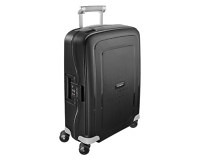
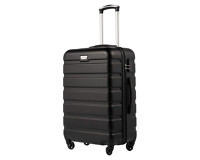
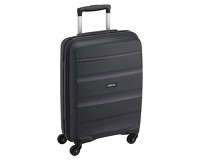
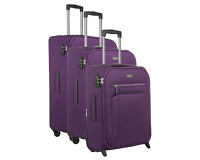
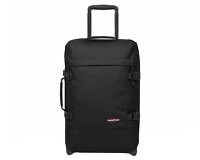
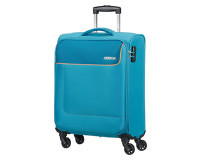
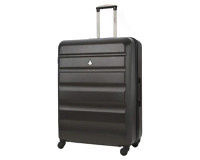
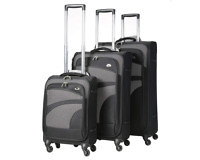
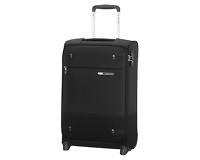
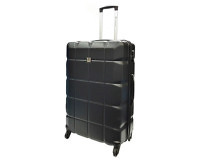
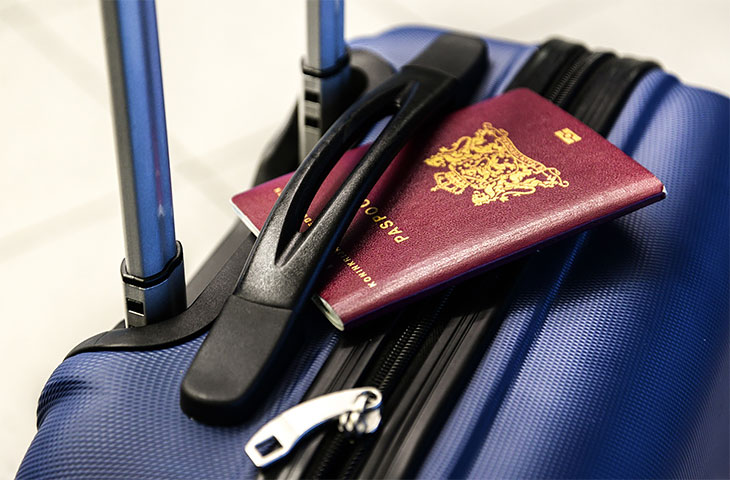

 (17)
(17)
